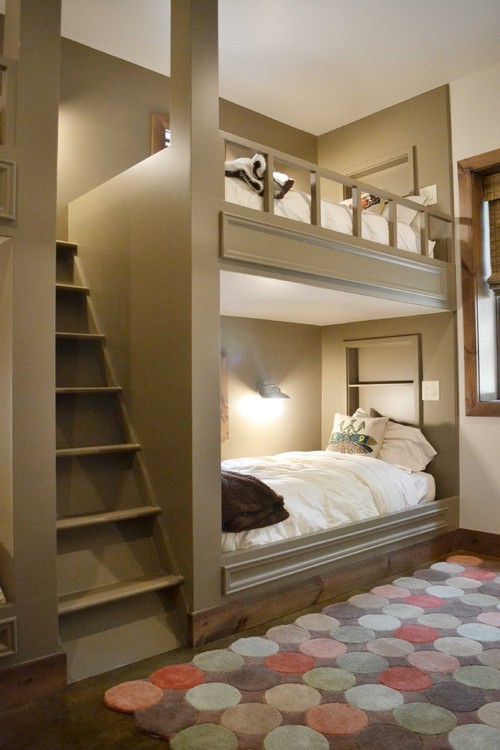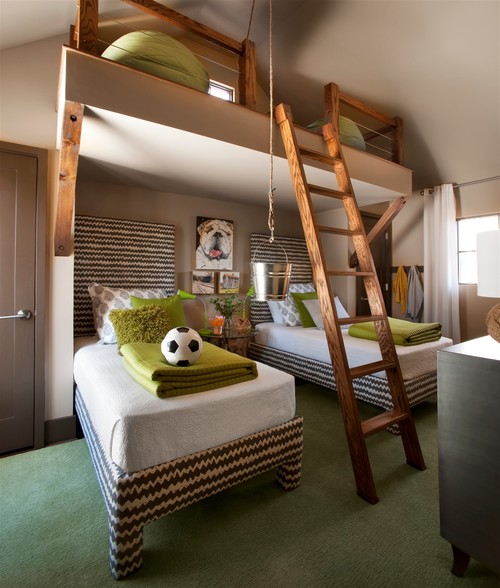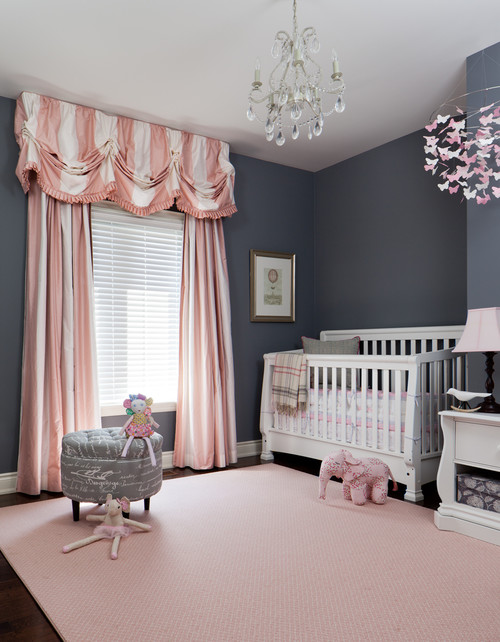For a child, a bedroom is more than just a place to sleep. It's a spot to do schoolwork, play games, rough-house, read, daydream, visit with friends and stockpile toys. As you plan out your child's bedroom, you'll need a space that serves all those functions — and is comfortable and practical for several years to come. The ultimate experts on what kids like best are kids themselves, so get them involved in the design process by letting them help with selections. That being said, children's preferences change often, so use accessories and colors that be easily replaced. Overall, whether you're decorating a playroom, bedroom or nursery, be sure to think about fun, growth and practicality.
Credit: Houzz
How do I decorate a kids bedroom?
When designing a child's room, think about color, color and more color. Incorporate a favorite hue on the walls or bring in bright accents, but stick with neutral furniture that doesn't need to be swapped out as interests change. While the furniture should be appropriate for your child's age, it also should be something that can grow with him or her. Get full-sized dressers and cabinets that can last through the school years, and consider a bunk bed, which is great to share with siblings. As they get older and no longer want to share a room, you can add a desk underneath the top bunk. With so many toys and clothes, storage is key. Add built-ins if you can, but cubbies and shelves are also great for those on a budget.Contemporary Kids by San Francisco Interior Designers & Decorators Artistic Designs for Living, Tineke Triggs
How do I decorate a playroom?
A playroom should be very lively and inspirational, so get creative with your color and furnishings. A wall mural or wall decal is a great way to incorporate playful design, while a chalkboard wall lets kids produce their own masterpiece. Try using fun furnishings, like beanbag chairs or floor cushions, and if you want to splurge, add in unique elements like a climbing wall, slide or swing. Because it is a multifunctional room, use space smartly. Install built-in cabinets and shelves for much-needed toy storage, and include a desk or work table for homework and coloring. A craft station is a great way to get those creative juices flowing, or consider a small snack area with microwave and mini fridge. Divide the space into zones so that quieter kids can draw or read while louder, more active kids can watch tv or play a musical instrument.Credit: Houzz














